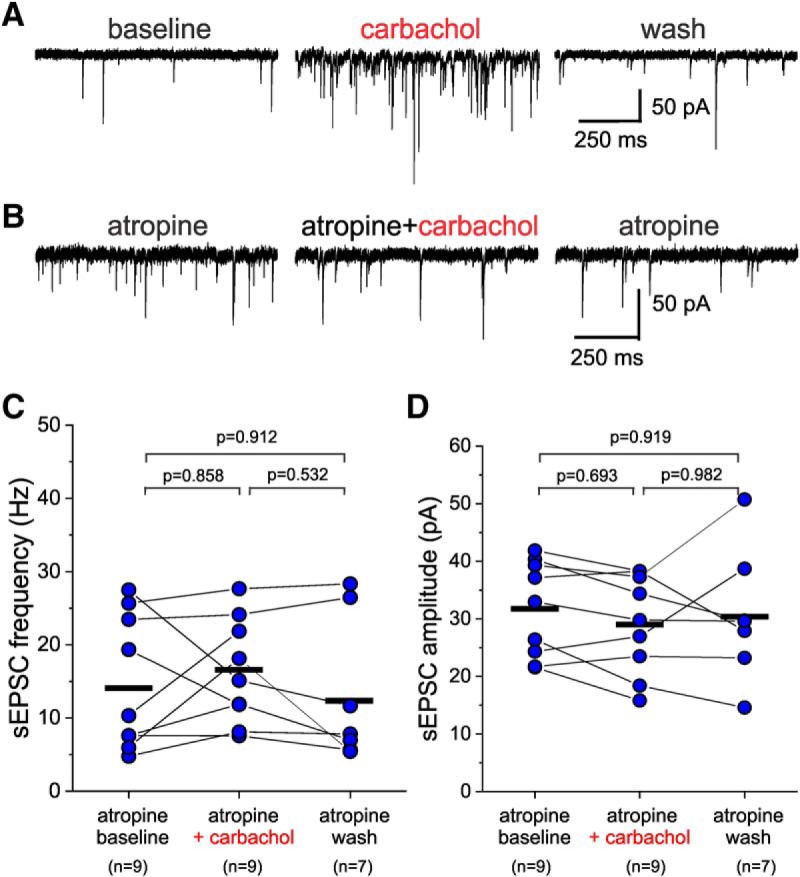Figure 8.

The non-selective mAChR antagonist atropine prevents the effects of carbachol on sEPSCs recorded from L3-6 PV+ BCs. A, Examples of sEPSCs recorded in the continuous presence of the vehicle ethanol (0.1% V/V) from a layer 5 BC before (atropine baseline), during application of 20 µM carbachol (carbachol), and after washout (atropine wash). B, Examples of sEPSCs recorded from a layer 5 BC in the continuous presence of the vehicle ethanol (0.1% V/V) and atropine (10 µM) before (baseline), during application of 20 µM carbachol (atropine+carbachol), and after washout (atropine wash). C, Carbachol applied in the presence of atropine did not have significant effects on sEPSC frequency when estimated 20 s before carbachol application (atropine baseline), 20 s before beginning of washout (atropine+carbachol), and after ≥10 min of washout (atropine wash; one-way RM mixed model ANOVA, F(2,16.46) = 0.813, p = 0.461; shown in figure are the results of Sidak-corrected, post hoc pairwise comparisons). The black horizontal bars indicate the mean value for each sample. D, Carbachol applied in the presence of atropine did not have significant effects on sEPSC amplitude when estimated 20 s before carbachol application (atropine baseline), 20 s before beginning of washout (atropine+carbachol), and after ≥10 min of washout (atropine wash; one-way RM mixed model ANOVA, F(2,16.11) = 0.524, p = 0.602; shown in figure are the results of Sidak-corrected, post hoc pairwise comparisons). The black horizontal bars indicate the mean value for each sample.
